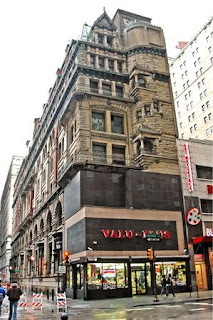In what wasn't one of his ugliest projects, Carl Dranoff's 777 South Broad is finally open on South Broad Street. Anyone who has driven up South Broad over the past year might wonder, with the low quality mashed potato board construction used to erect the quasi-Deco apartment building, what really took so long? And even more importantly, what's this mid-century, Miami-esque recreation going to look like in a decade.
Perhaps Dranoff hasn't been at this game long enough to learn from his mistakes, but even after the harsh criticism he received after piecing together Symphony House, he still focuses on a laundry list of amenities rather than quality or style. To him excess is everything no matter how short its lifespan, how soon it will need to be replaced, or how cheap it may look. He builds disposable buildings.
Symphony House and 777 are urban McMansions. Before long the low quality materials used on both these buildings will be lining Broad Street's sidewalks.
Delta Park Picnic, July 1972
1 day ago






